MacBook Pro M4 review: 14-inch and 16-inch models that set the bar high
For creatives and the style conscious, there really is no better machine than the MacBook Pro M4


Apple’s flagship laptop is even faster and retains its place as the ultimate machine for creators on the move. It’s more power than most people will ever need, but that’s no bad thing, as it will last you longer, and it looks incredible. The new nano-texture display is a great option but comes down to personal preference. If you want the best, there’s a model here in the MacBook Pro range for you.
-
+
Incredible speed
-
+
Great screen – particularly the nano-texture option
-
+
Long battery life
-
+
Futureproof
-
-
Still relies on touchID
-
-
More power than you may need
-
-
Intelligence features aren’t here yet
Why you can trust T3

The MacBook Pro M4 is the latest generation of a very well-oiled machine. The MacBook Pro has long represented the pinnacle of creative power for those on the move. Designed for photographers, video editors, musicians and other creatives that require a high performance laptop that you can take anywhere.
With the move to Apple Silicon, the MacBook range raised the bar, offering fanless designs that outclassed the competition in speed. Since the initial M1 chip, the subsequent versions of the system on a chip have offered an increasing number of cores to its central processor (CPU) and graphics processor (GPU) as well as those neural engines that have been providing AI abilities since before it was a buzzword.
It’s no surprise then that the M4 family of chips in the new MacBook Pro machines are faster and more efficient than ever. You would expect it to be faster at doing things than the M3 versions, and considerably faster than the M1 models. So comparing these things almost seems pointless.
Instead, I want to look at this latest MacBook Pro in isolation. As a machine with a task to do for people that just need something that works – but also for those that want something that looks good, too. Luckily for them, the MacBook Pro M4 does both of these things, and does it very well. I’ve been using the 14-inch model as my daily machine for the past week and it continues to impress. I also tried out the 16-inch model to see how the features compare, and the advantages and disadvantages each one offers.

How much is the MacBook Pro M4?
The latest MacBook Pro models start from £1599 / $1599 for the 14-inch version, which features an M4 chip with 10-core CPU and 10-core GPU and comes with 16GB memory and 512GB SSD storage. The 16-inch version starts from £2499 / $2499, this features an M4 Pro chip (14-core CPU, 20-core GPU), 24GB memory and 512GB SSD storage. The cheapest model featuring the M4 Pro chip is the 14-inch model with 24GB memory and 512GB SSD storage for £1999 / $1999. The M4 Max chip models start from £3199 / $3199 for the 14-inch with 36GB memory and 1TB storage.
If you want the fully specced out model with nano-texture screen, M4 Max chip (16-core CPU, 40-core GPU), 128GB memory and 8TB SSD storage will cost you £7049 for the 14-inch or £7349 for the 16-inch model.
I tested the 14-inch M4 model with 16GB memory and 1TB storage, priced at £1799 / $1799 and the 16-inch M4 Pro with nano-texture screen, 48GB memory and 2TB storage, priced £3649 / $3649.
Get all the latest news, reviews, deals and buying guides on gorgeous tech, home and active products from the T3 experts
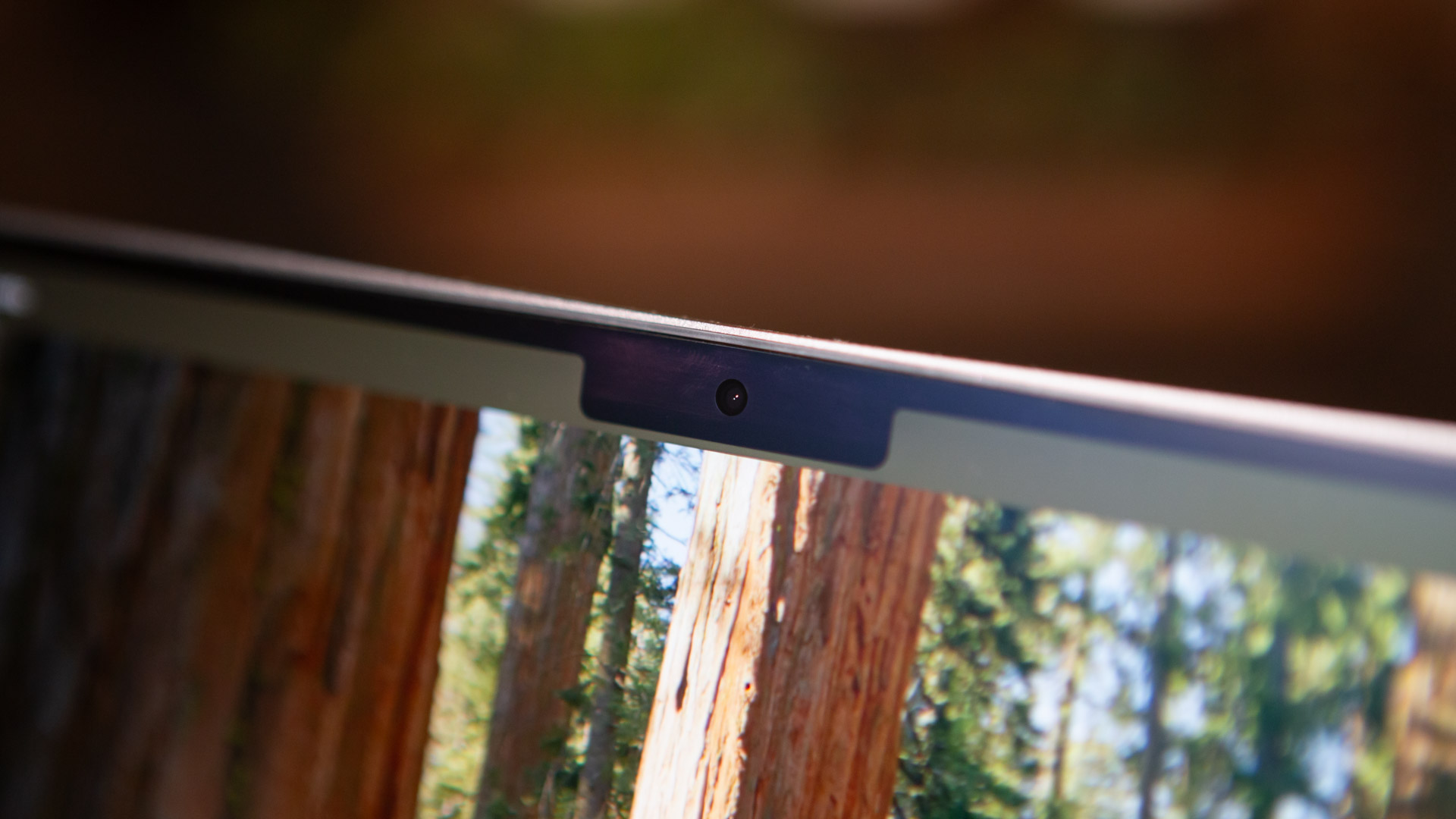
What's new on the MacBook Pro M4?
There’s no physical change to this year’s MacBook Pro models, so at first glance you wouldn’t be able to tell them apart from the 2023 M3 models – but that’s no bad thing. Coming in two distinct sizes of screen, the 14.2-inch model is 31.26cm (12.31 in) by 22.12cm (8.71 in) which is just slightly bigger than an A4 folder.
The larger 16.2-inch model is 35.57cm (14.01 in) by 24.81cm (9.77 in) which isn’t bad for such a large screen. Unlike the MacBook Air, these models are a little chunkier in their thickness, with the 14-inch standing 1.55cm (0.61 in) folded and the 16-inch 1.68cm (0.66 in). Though the 14-inch isn’t that much different to an iPad Pro in a Magic Keyboard case.
All models now come in a choice of Space Black or Silver. Previously, only the M3 Pro models got the option of the Space Black, so it’s nice to see this colour option on the standard M4 machines too.

One big advantage of the MacBook Pro for me has always been the physical ports that it has, and this year’s model is no different. You get three USB-C ports on these models which are Thunderbolt 4 on the M4 models and the faster Thunderbolt 5 on the M4 Pro and M4 Max models. You also get a proper HDMI port, a 3.5mm headphone port and an SDXC card slot. It was nice to see the HDMI and SDXC port return on the M3 models, so I’m glad they have remained on the new M4 Macs.
You used to get four USB-C ports on the MacBook Pro when it charged via USB-C but now it has reverted to a dedicated MagSafe 3 charging port for that. When running from the mains lead, it makes no difference, though while on battery you are one short.
Talking of cables, the power cable is a black woven cable and it looks superb with the Space Black edition. However, it still plugs into a white USB-C power adapter. The silver model also comes with the black cable too, which was a bit of a surprise. That USB-C to MagSafe 3 cable is available in a choice of four colours on the Apple website, should you want to mix it up. Sadly, there’s no colour choice for the Apple power adapter – though Anker does sell a 100W black charger.
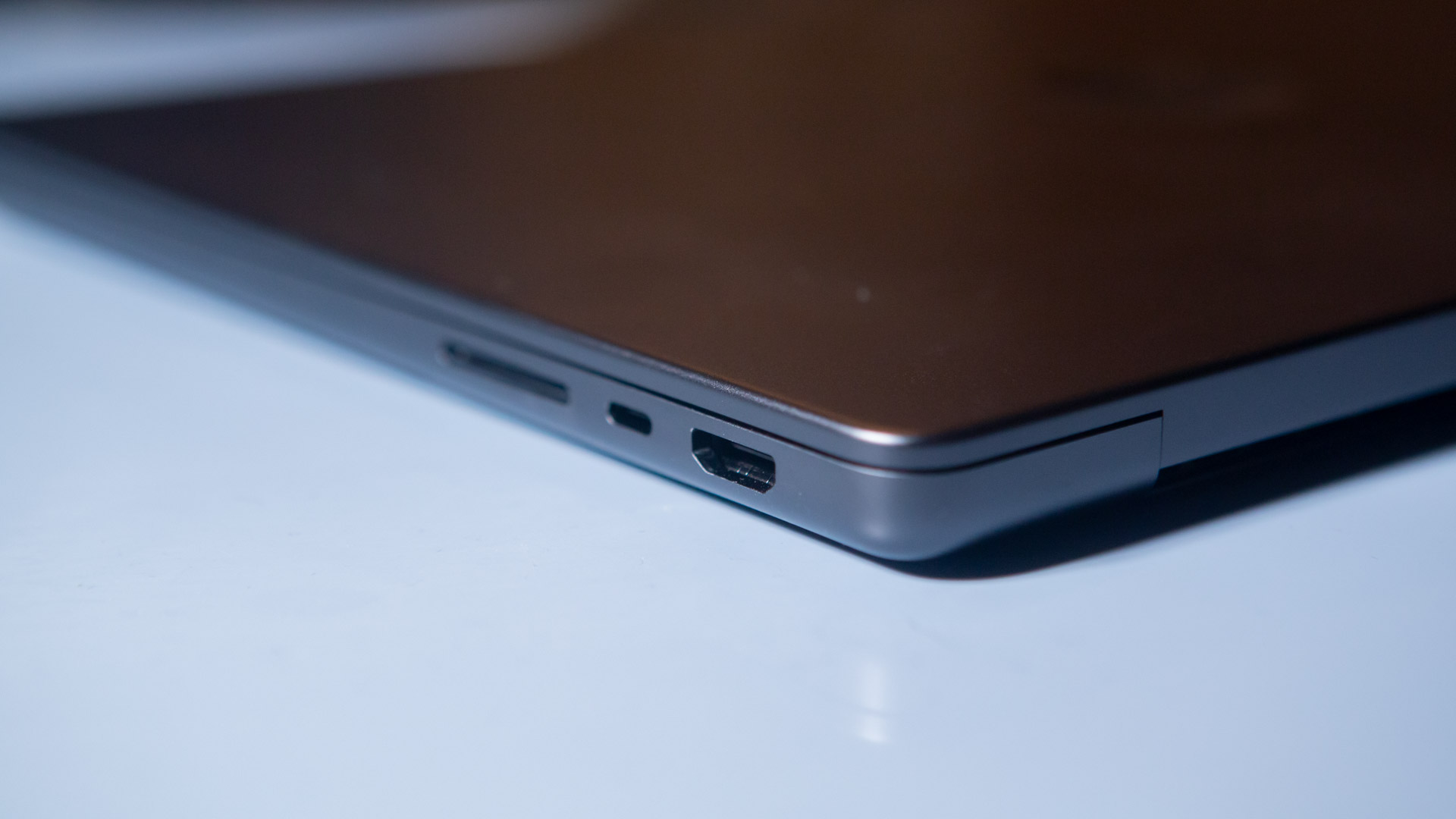
HDMI and SDXC card slots are both featured, in addition to three USB-C slots
One big feature change that will only be obvious when you use it is the change to the front camera on the MacBook Pro. The 1080P FaceTime HD camera has been replaced with a 12MP Centre Stage camera. This allows it to reframe the 1080P video to keep you perfectly in shot as you move around. It also offers desk view, to give a top down view of what’s in front of you, while still providing a shot of you in the frame. It’s something that previously was only available when pairing your iPhone with your Mac.
Like the M3 model, the new MacBook Pros feature Bluetooth 5.3 and Wi-Fi 6E for wireless connectivity. There’s also a six-speaker sound system with support for Spatial Audio, both through the speakers and using AirPods, and a three-mic array that uses beam-forming to provide better noise reduction when recording sound.
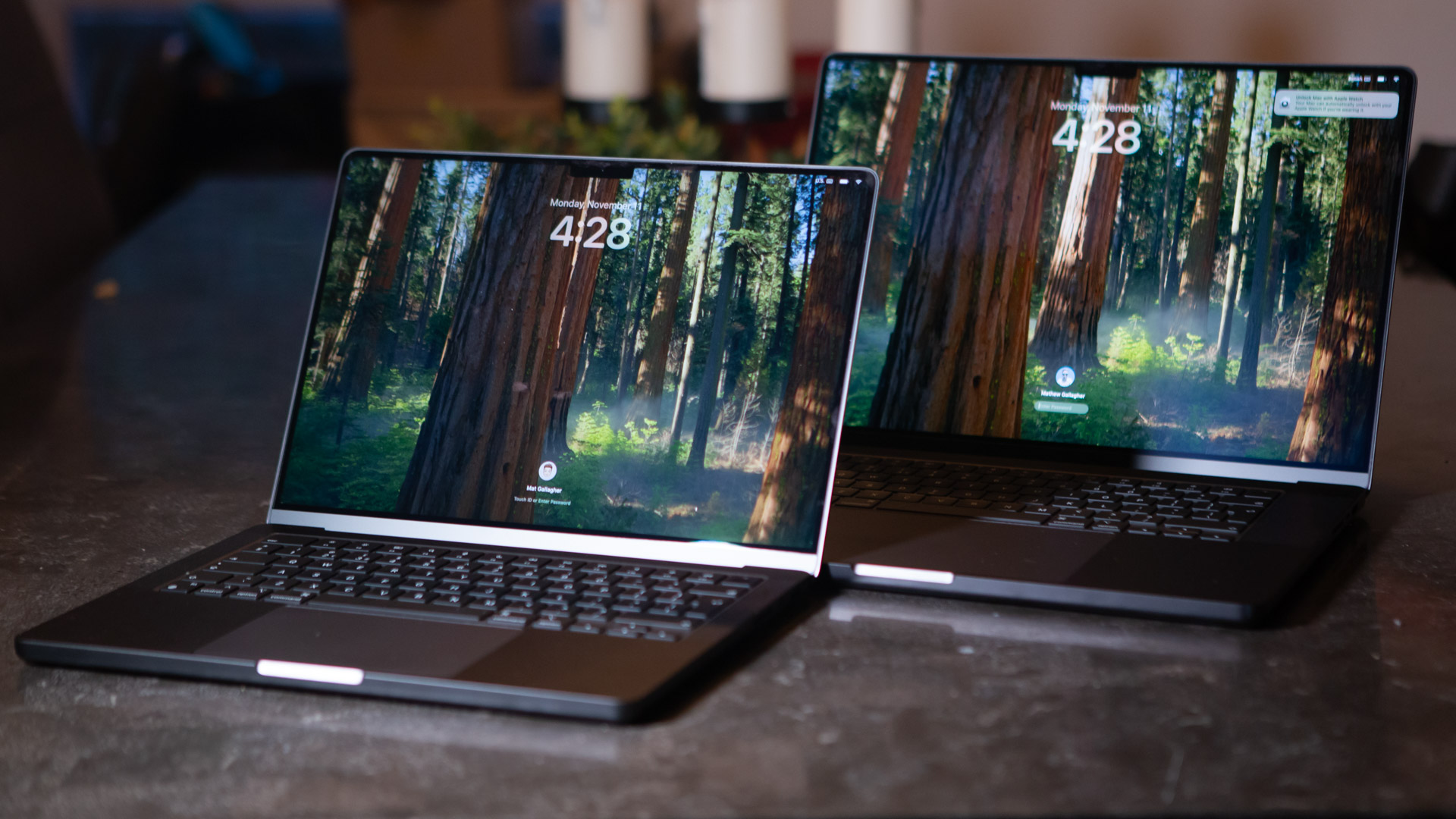
MacBook Pro Display
Whether you pick the 14 or the 16-inch MacBook Pro, the screen is extremely impressive. This liquid retina XDR display is a mini-LED backlit screen with either 3024x1964 or 3456x2234 pixels. It offers an upgraded 1,000 nits standard definition for outdoor use, compared to the 600 nits on the previous model. The 1600 nits of peak brightness and 1,000 nits of XDR brightness remain the same.
It is a shame that these screens haven’t been upgraded to Tandem OLED displays, like the 13-inch iPad Pro, but the brightness levels are the same. The iPad Pro OLED screen has a slightly higher pixel density than the Mini-LED screen on the MacBook Pro, and is of course touchscreen.
Comparing Apple TV trailers, such as the new Before thriller with Billy Crystal, and the preview of the new season of Silo, I actually prefer the heavier contrast on the MacBook Pro. It would be nice to have a touchscreen option on a Mac though.
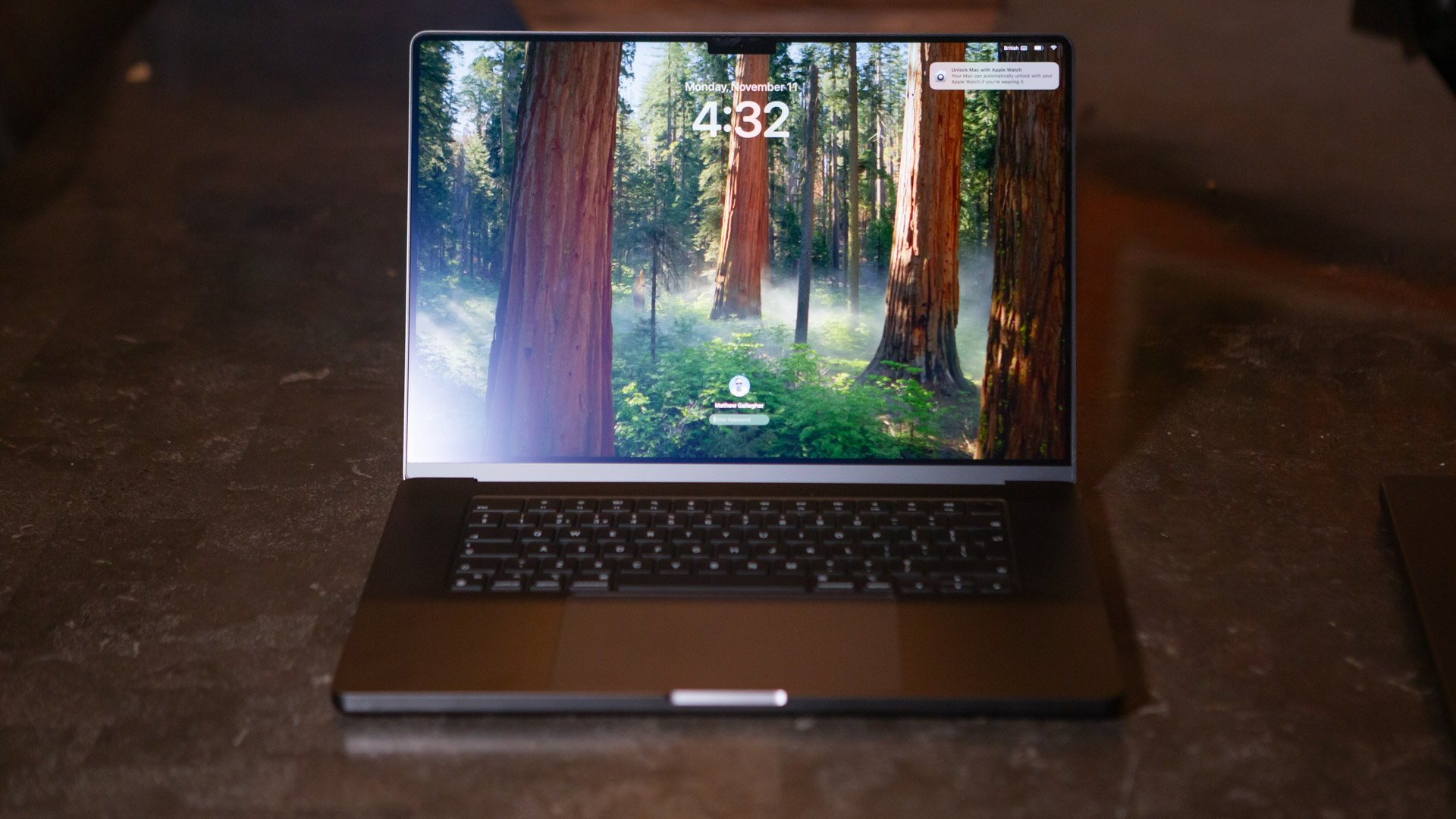
The big change with the new MacBook Pro is that for an extra £150 / $150 you can opt for a nano-texture display on any of the range. This is a special display, rather than just a coating, that reduces the reflection and glare on the surface. The display looks almost matte in comparison with the regular screen but the difference is impressive.
I watched a range of content with the nano-texture screen on the 16-inch MacBook Pro and with the regular display on the 14-inch MacBook Pro. While there is a slight reduction in contrast, the images still look great on the nano-texture screen, and strangely more 3D due to the matte nature of the screen. You can really notice the difference in reflections, even indoors, so if you plan to use the computer outdoors, it’s a no-brainer.
That said, as I tend to use my Mac indoors under softer light, I think I would personally stick with the regular display. If there was no difference in price or just the nano-texture model on offer, I would happily go for that one, but I just found content to look fractionally better without it.
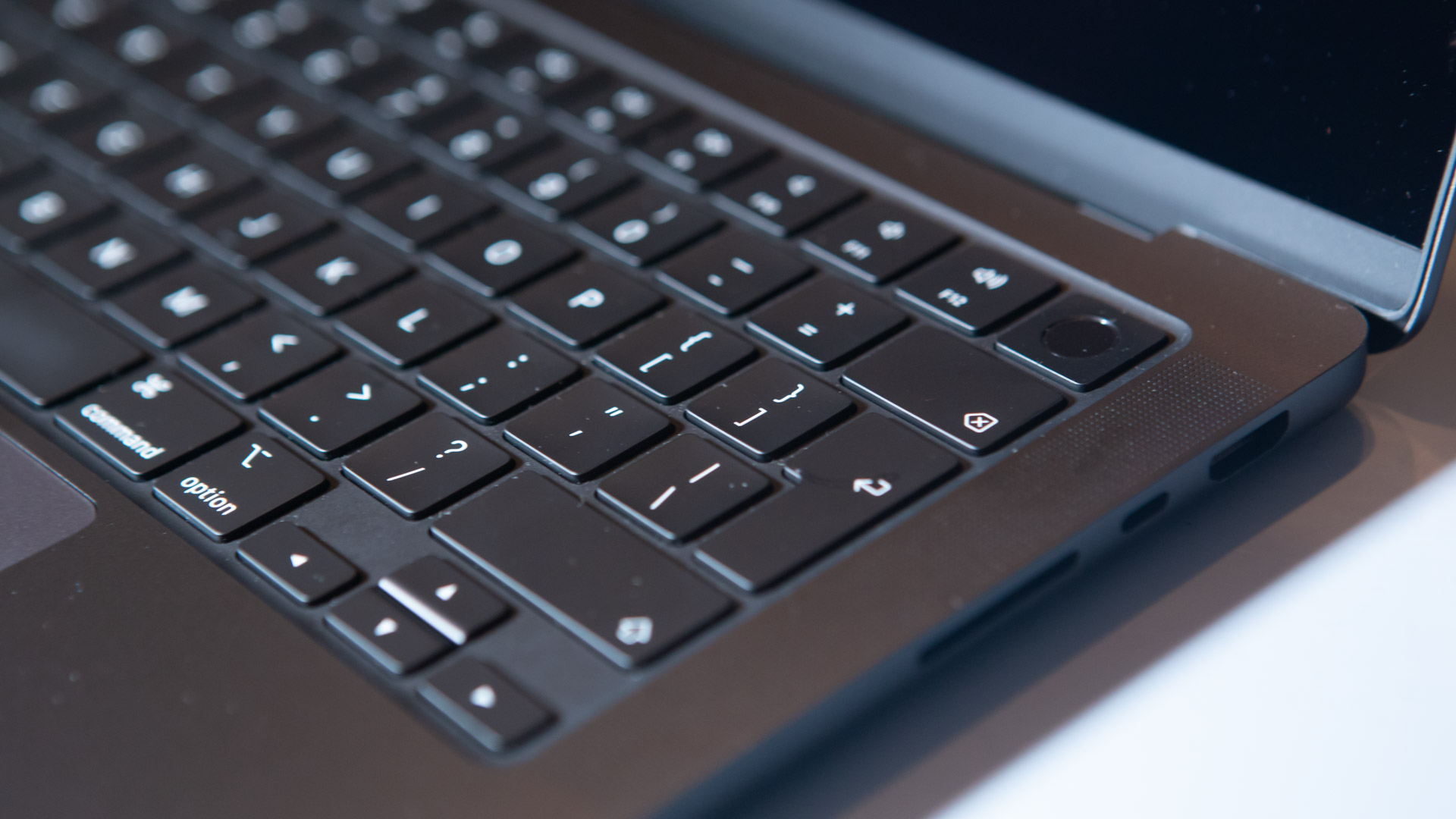
Performance and battery life
The biggest change with these new MacBook Pro models is the M4 chip – or the M4 Pro /M4 Max. According to the specs, it’s a significant power upgrade ove the M3 family of chips. Realistically though, most users considering an upgrade are coming from earlier M-series models, like the M1 or M2 MacBook Pros, or maybe even the Intel machines, which are now at least five years old.
With these machines, the upgrade is even more noticeable. You can see it in the time it takes to open programmes like Photoshop and Lightroom – now almost instantaneous. To really get a clear picture of how much faster these new chips are though, I ran the Geekbench 6 benchmarking tool and checked how my scores on the M4 and M4 Pro chips compared to previous models on their charts.
The standard M4 chip in the 14-inch MacBook Pro gave me a CPU multi-core score of 14,957. That places it just below the M3 Pro MacBook Pro models in the rankings, and just above the M2 Max Mac Studio machines.

The M4 Pro 16-inch MacBook Pro, however, delivered a CPU multi-core score of 22,392. This tops the current Mac Benchmark charts quite significantly, putting it above the M2 Ultra Mac Studio models and M3 Max Mac Pros. It also tops the wider processor benchmarks, including the 24-core Intel Core i9 and the 32-core AMD EPYC 9374F.
The M4 Pro isn’t the most powerful chip available for the MacBook Pro either. I suspect the M4 Max chip will see this number pushing 25,000 or more. That’s a truely incredible performance for the CPU, but the GPU numbers are just as strong.
Using the Metal benchmark test the M4 chip reached a score of 57,986 while the M4 Pro reached 112,033. Similar to the CPU, the M4 sits just below some of the M3 Pro models, though not quite as close. The M4 Pro GPU doesn’t sit as high as the M3 Max models and is nowhere near that of the M2 Ultra chip machines, showing that this is where the Max and Ultra chips really shine. It’s still a big step up from the M3 Pro chips though, so you will see a performance bump.
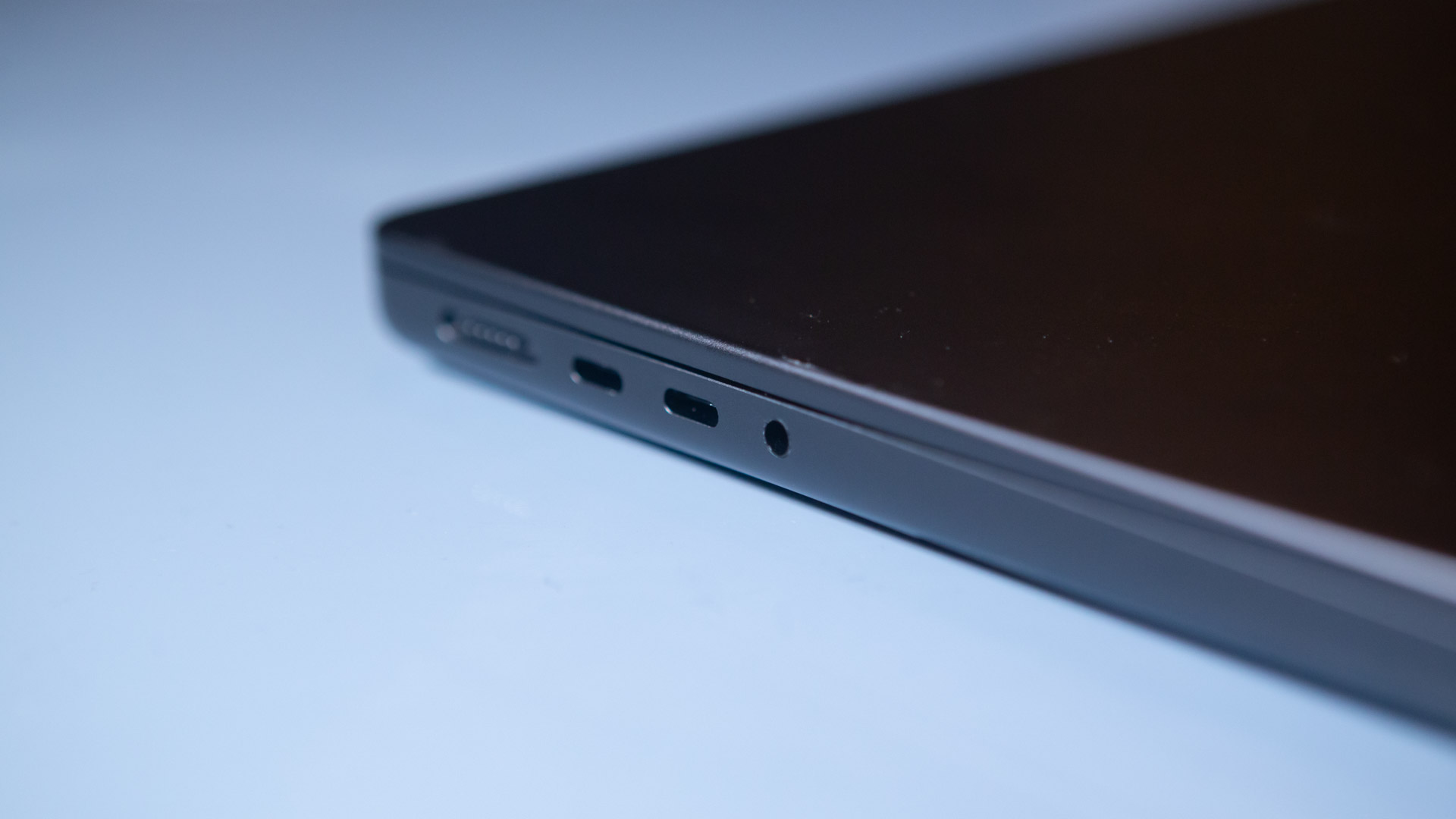
The new chip hasn’t just meant a bump in performance for the MacBook Pro though, it’s also meant a more efficient use of power. That means that to do the same tasks as on the M3 chips – or older – takes less power, and that means the battery can last longer.
The specs give the new model a two hour increase in video streaming time and an hour extra web time – taking it up to 24 hours and 16 hours respectively. I used the 14-inch MacBook Pro model for nearly two work days on a single charge, with one of those days commuting on the train.
The 16-inch MacBook Pro has the advantage of coming with a 140W charger which provides fast charging for the machine. The 14-inch model comes with a 70W charger as standard, except the M4 Pro and Max models which come with a 96W charger). You need a 96W charger or above to get fast charge on the 14-inch models, so this is worth considering if you’re usually working on the move.
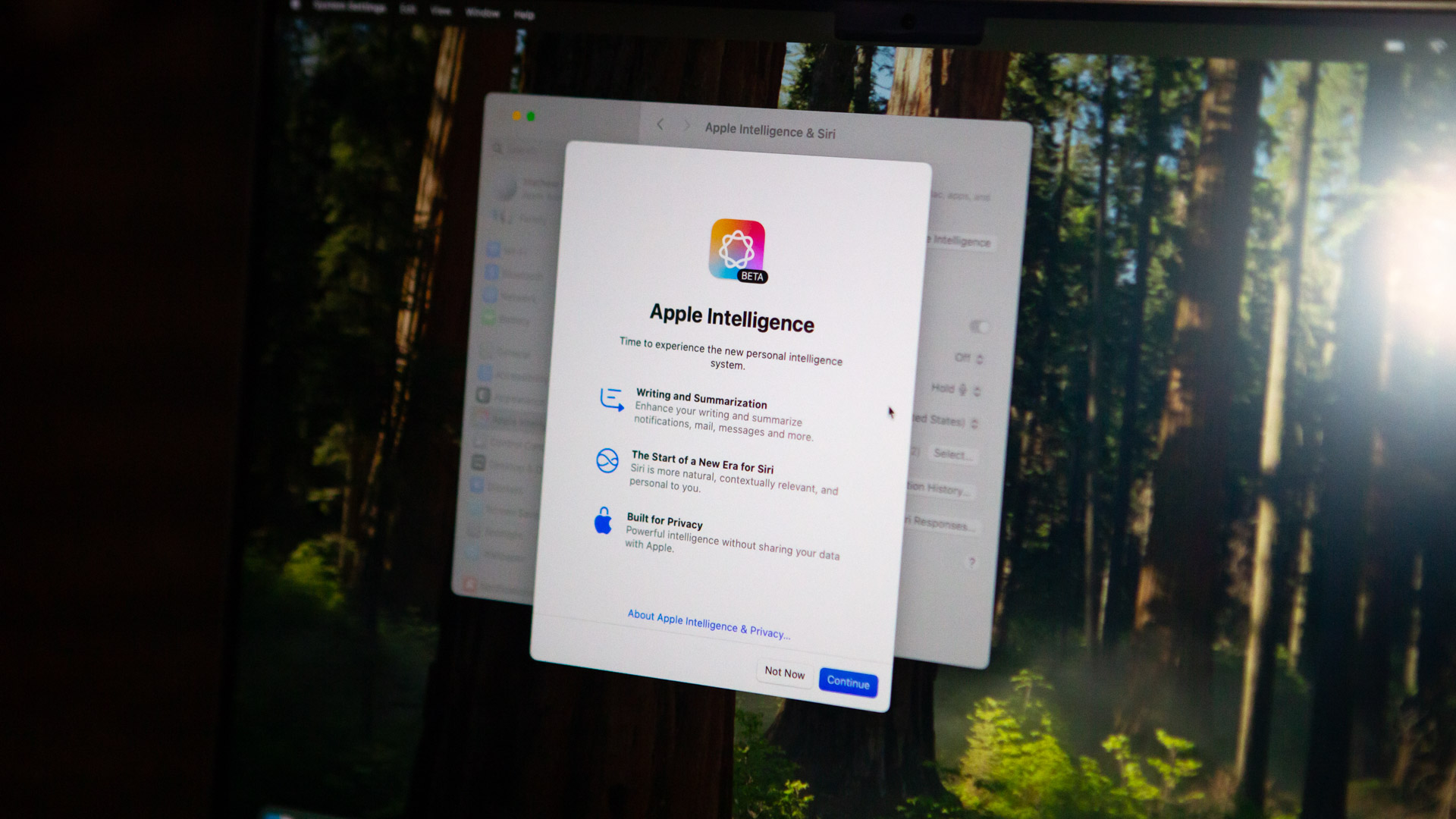
Apple Intelligence features
As part of the macOS 15 Sequoia, the latest MacBook Pro machines can run all of the new Apple Intelligence features. This is not exclusive to the M4 chips – all M-series silicon will allow you to run these features, but as some of the most powerful in the range, these machines should provide the best version of them.
Apple Intelligence uses a mixture of local processing and cloud processing for its features, though all your data is kept secure, with dedicated secure servers used when required. The features aren’t yet available in the UK unless you download the Public Beta of macOS 15.2, and even then this is only a selection of the total feature set.
Some of the most useful Apple Intelligence features are based around its writing tools. These provide the ability to rewrite paragraphs, provide useful feedback or summarise text across a wide range of programmes. You can do this in Mail, in Notes, in Freeform, as well as many third party apps. This can be particularly handy in notifications, and I imagine it will be a great feature in Mail when it rolls out.


The other part of Apple Intelligence I’m excited about is the image creation feature. The Image Playground app is available on iOS as well as macOS and provides a very user-friendly portal into the world of AI image creation. In addition to this, the Photos app is now easier to search, with natural language searching – so I can search for pictures of my dog Rufus with a ball, and it will find them.
Photos now has a clean up tool, to help you remove unwanted items from photos. This works with any pictures on your Mac and allows you to use the brush to select or circle, or just click on the item you want to remove and it will render a new background in its place. It’s a feature that has been available with other editing software for a while but it’s definitely a handy addition here.
The other big part of Apple Intelligence is the enhanced Siri experience. It is now designed to use more natural language and won’t get tripped up if you correct yourself mid-sentence. It will even allow you to ask follow up questions without having to repeat yourself. My favourite part though is being able to type your questions to Siri, allowing silent operation for those times that you don’t want to talk to your Mac – which for me is most of the time.
Perhaps my favourite feature in macOS 15 though is the iPhone mirroring. This provides a full version of your phone screen on your desktop, allowing you to access all of your apps, swipe between screens and send message, all with your phone still in your pocket. It's an even handier feature when you're working on the move and you don't want to have both your phone and laptop out on display.

Mirroring the iPhone on macOS 15 Sequoia
Should I buy the MacBook Pro M4?
As a machine for high end creators, there’s no better option than the MacBook Pro. For those of us that don’t need to crunch through huge audio and video files, it’s still a great option. Arguably it’s more machine than you’ll ever need – I know my general use case will barely challenge even the standard M4 model, let alone the M4 Pro or M4 Max versions.
If you have a MacBook Pro M3 or even a MacBook Pro M2, then chances are you don't really need to upgrade yet. Unless you're a power user maxing out that processor, the seconds this chip saves isn't going to change your world.
Saying a machine is too powerful is hardly a criticism though, and it does mean that this laptop will last you for many years to come. I really would hope to wait another four generations (when we see an M8, maybe) before I would need to upgrade again.
My biggest concerns is that even the 14-inch model is considerably chunkier and heavier than the MacBook Air M3 model – which is also an excellent choice for most users. However, I do think the 14-inch screen is my perfect size.
On the screen, the nano-texture display is really impressive when it comes to reflections and glare. If you are likely to use your Mac outside regularly or under harsh lighting conditions, I would definitely recommend paying the extra. However, under normal indoor light, the regular screen looks better.
If you want the very best laptop that money can buy, the MacBook Pro M4 is it. I would suggest going for the 14-inch model, with M4 Pro chip, 48GB memory and the 1TB hard drive, which comes in just under three grand, though even the base model is excellent.
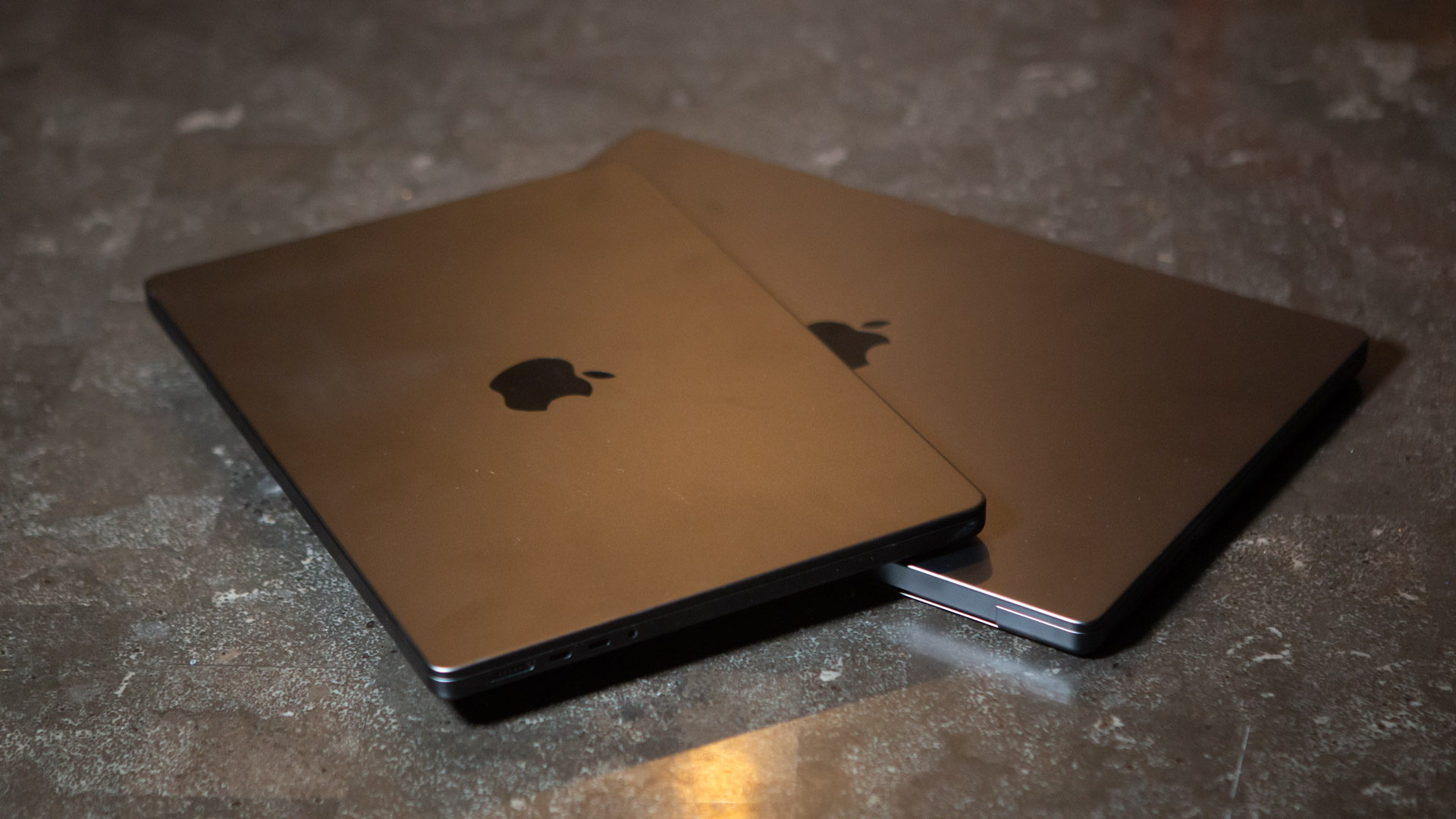
Also consider
For most users, the alternative to the MacBook Pro is the MacBook Air. Coming in a 13-inch or 15-inch model, all feature the M3 chip, which is extremely fast, and up to 24GB memory. It’s a considerably cheaper option but probably still enough to last you for a long time.
If you predominantly work from a single location, the new Mac mini should be on your list to consider. If you already have a monitor, mouse and keyboard you can get started with an M4 chip model from just £599 / $599. Even a top spec model, with 32GB memory and 1TB storage is under 1400.
If you want a machine for on the move, don’t underestimate how good the iPad Pro is. The 13-inch model starts from £1299 / $1299 and you can add a nano-texture display for an extra 100 with the larger storage models. You will want to add the Magic Keyboard if you’re using it for writing, and the iPadOS isn’t as adaptable as the full macOS as a laptop replacement. However, once you’re in your app, it’s very capable.

As T3's Editor-in-Chief, Mat Gallagher has his finger on the pulse for the latest advances in technology. He has written about technology since 2003 and after stints in Beijing, Hong Kong and Chicago is now based in the UK. He’s a true lover of gadgets, but especially anything that involves cameras, Apple, electric cars, musical instruments or travel.